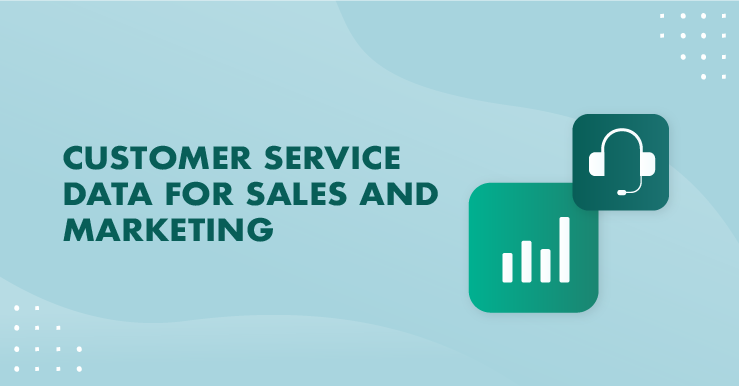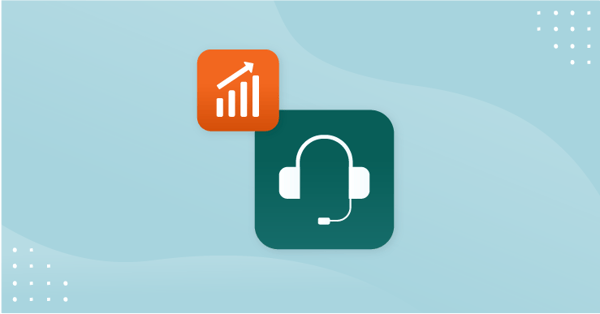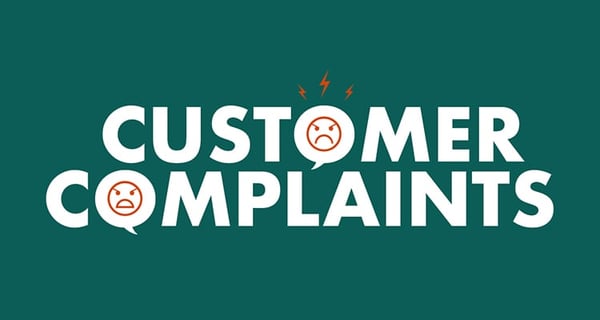Customer service data isn’t something unique – businesses of all types and sizes have it.
But one way you can set yourself apart from your competitors is to think differently about what you do with it!
Some businesses simply see customer service (CS) data as a way to improve customer support productivity, while others see it as a smart way to up their game.
In fact, just 20% of businesses look at customer service data daily, and only 40% look at it monthly.
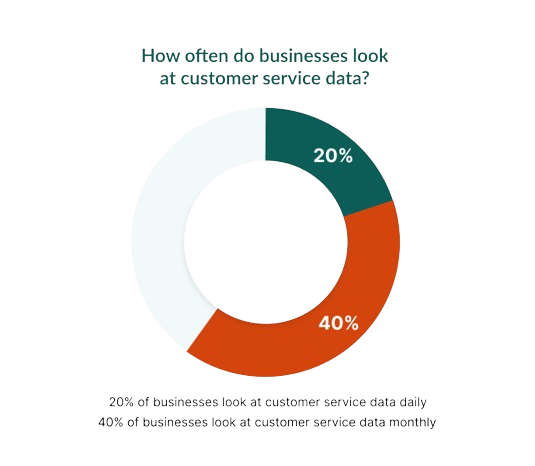
When used properly, customer service data can give you an advantage in business that will help you accelerate growth, increase profitability, and dominate the competition.
But why is this customer service data important, and how can you use it to your advantage?
Why is customer service data important?
Your customers are the lifeblood of your business. So, it clearly makes sense for you to know more about them and think about how you can find more of them.
In other words – customer service data is the ideal source of information to help you understand more about your customers.
But how do you use customer service data to your advantage?
How do you use customer service data?
Customer service data is hugely important when it comes to actually serving your customers.
Using an all-in-one customer-focused platform can give your support agents a complete 360-degree view of your customers across sales, marketing, and service.
😐 Without access to this information, your support team will face an uphill battle to offer high-quality customer service.
🙂 With it, they’ll have all the tools and information they’ll need to deliver a support service that leaves your customers feeling highly satisfied with their experience.
But, as you might’ve already guessed, support services aren’t the only way you can use customer service data! Forward-thinking companies are also using customer service data to improve their sales and marketing.
So, let’s dive into how you can start leveraging CS data for more than just great customer support.
How to use customer service data to boost SALES
The sales department is where growth comes from, and net new revenue is obtained. So, if there’s anything you can do to improve sales performance, you’re going to want to try it, right?
Obviously, sales tend to come before customer service and support in the customer journey, so how can customer service data help you boost sales?
Identifying upsell opportunities
During a customer service engagement, it’ll often become clear that a customer is primed and ready for an upsell opportunity. This could be anything from additional licenses, increased order quantities, or an expansion of their existing service.
There are two plays you can make here to identify upsell opportunities using customer service data:
- Analyze the data you already have on a customer. Look at such things as increased usage or inquiries about a specific product feature. This will flag potential upsell opportunities.
Then, where relevant, prepare your customer service team to use these opportunities to upsell to your customers the next time they engage with a support agent.
- Use your customer service team to spot the opportunity or sound out the customer on the potential upsell – and use the customer service data from their support engagement to generate a lead in your CRM for your sales team to follow up on.
Identifying cross-sell opportunities
While upsells are all about a natural increase in revenue from a customer based on their usage of your product or service – cross-sells are slightly different.
Cross-sells are all about offering the customer an additional product or service that you think they could benefit from, but they’re not already using.
But how does customer service data help with cross-selling? 👉 In fact, it’s quite easy.
By utilizing the data held in the 360-degree view of your customers, your support agents can quickly see which of your products your customers already use. During their support engagement, they can then introduce any products they believe would be relevant to that customer.
Similarly, if your average deal size is high or the sales process needs specialized knowledge, and you have a dedicated sales team to close all your deals – then your customer support team can use the customer service data to inform sales and this way create leads.
Creating sales leads
It’s not just your customer support team who should be looking at customer service data and using it to identify opportunities. This should be a prime hunting ground for your sales, customer success, and marketing teams, too.
By analyzing existing customer service data proactively, your sales and marketing teams can identify revealing information about your customers and spot opportunities that perhaps your support team didn’t (or aren’t trained to do).
For example, you may see several support tickets from the same customer who is trying to achieve a certain outcome with your product but cannot do it with their current level of service.
By using the customer service data, you already have, sales and customer success teams can then take the information and use it to introduce a solution to your customers that is an ideal fit for their problem.
Overcoming sales objections
When done right, sales is all about listening to your customers and presenting the ideal solution for their problems.
The trouble is, even if you think it’s a perfect fit, your customers will often have other ideas.
This pushback from your customers is known as a sales objection. And it’s your sales team’s job to overcome these objections and close the deal.
If your customer service team is already introducing a potential new upsell or cross-sell to a customer, then chances are they’re going to hear some of the initial questions and concerns firsthand.
Ahead of any outreach, your sales team can use the information that has already been gathered in the customer service software to prepare themselves for any specific or unusual objections that have already been voiced by the customer and handle them on the spot!
But for that you need to have an alignment between all your teams and departments.
Luckily, sales isn’t the only part of your business that you can improve by using customer service data. You can improve the way you do marketing, too.
How to use customer service data to enhance MARKETING
How can customer service data help you with marketing to new prospective customers?
Quite a lot.
In fact, 76% of companies now use integrated data, such as customer service data, and report a better market position as a result.
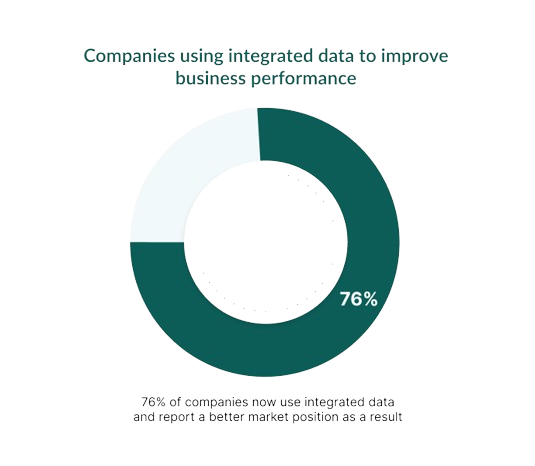
Here are four ways you can leverage customer service data to improve your marketing initiatives.
Market research
If you want to understand what your existing and prospective customers are truly looking for in a product or service like yours – nothing beats market research.
Sure, you could run surveys or analyze your competitors to get a feel for what your customers truly want, but there is another, easier way.
You can use customer service data as FREE market research.
Analyzing the information your customers are already freely sharing with you via support tickets gives you a highly accurate picture of exactly what they’re looking for to get value from a solution like yours.
So, instead of guessing what your next marketing campaign should communicate, take some time to understand what your customers are actually looking for by reviewing their customer service data.
Voice of the customer data
When it comes to creating marketing messages that truly resonate with your target audience, one of the best tactics any marketer can use is the voice of the customer data.
| “The more you make your voice their voice, the more likely you are to actually find a way into a conversation with them,” copywriter Joanna Wiebe. |
Accessing all your customer service information in one place allows you to quickly find and use feedback and ideas from your customers.
You can then pinpoint relevant phrases or descriptions your customers use when talking about your product or service and use them in your new website or landing page copy.
In other words – listen to their voices to speak their language!
Using complaints to drive improvements
Not all customer feedback is going to be glowing and full of praise for your product or service, though.
But that doesn’t mean you should ignore it.
On the contrary, to borrow a phrase from the best-selling book on the subject – a complaint is a gift.
By proactively addressing customer complaints (rather than ignoring them) you’re ultimately going to improve the effectiveness of your overall marketing strategy as a result.
There are a number of things your customers might have mentioned; for example:
- It could be that your product lacks features compared to your competitors
- You may be more expensive than other options on the market
- The experience you offer your customers falls short of expectations
If one of your existing customers has these concerns, then chances are potential customers you’ve not even engaged with yet also have similar doubts.
Fixing these problems will make your product more attractive and strengthen your position in the market. This, in turn, will make your job as a marketer easier.
Well-defined ICP
When marketing is done right, it targets the customers who really need your product, are ready to pay for it, and willing to become long-term customers.
But that’s not easy. Often, businesses get carried away and market to anyone who might be remotely interested in their product.
This may even work in the short term. You can land new customers and secure net new revenue. However, over time those early customers may churn as they are not a good fit for your offering.
The solution? Review your customer service data regularly to understand which customers are the ‘best fit’ for your business. Then target more companies like them. Because they fit your ideal customer profile or ICP.
By refining your ICP consistently, you’ll begin to see an increase in retention and profitability, along with a decrease in support requests and churn.
And this means that all of your departments or functions should work together towards the same common goals, rather than as individual teams operating in silos. You can’t have different views of an ICP in each and every team.
But like with everything in life, it’s not all sunshine and roses. There are a few common pitfalls you need to look out for.
3 things to consider before you use customer service data
Before you start using customer service data, there is a number of common issues you should be aware of.
1. Data privacy
Depending on where you are in the world, data privacy can mean different things. For example, In Europe we have the GDPR – a regulation that stipulates how personal data must be used.
The GDPR empowers individuals to give their permission for their data to be used.
If you get this wrong, you risk to alienate your customers – with 79% of customers suggesting that they would stop doing business with a company if their data is used without their knowledge.
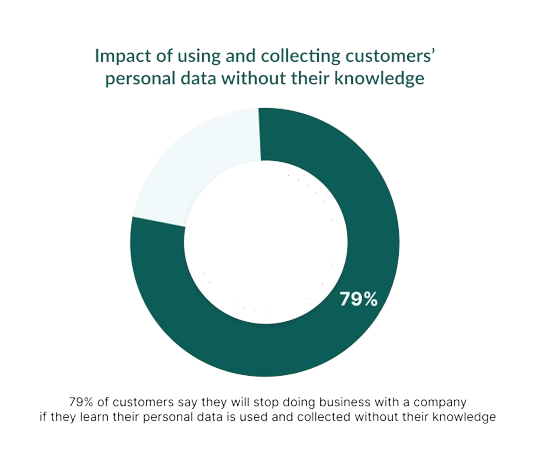
Luckily in the B2B context, there is some more flexibility regarding GDPR and data privacy thanks to the legitimate interest clause, but you should still exercise caution. Because failure to do that may result in hefty fines!
You can counteract this by using a European-based customer service tool such as SuperOffice Service.
2. Data storage and sub-processing
If you’re based in Europe, or working with European customers, then you need to ensure that the customer service data you’re collecting is also stored in the EU.
By the same token, you also need to ensure that any sub-processors of that data – e.g., software tools, systems infrastructure, companies, or people – are also based in the EU.
And, following the Schrems II judgment, you need to ensure that the data does not enter the US at any point without having standard contractual clauses in place.
One of the simplest ways to mitigate against this is by using a European-based customer service tool such as SuperOffice Service.
3. Data silos
In order for any customer service data, you’re using to be effective, it needs to be gathered and stored centrally.
Otherwise, you end up operating with data silos full of fragmented information.
This means you won’t have the most up-to-date and accurate customer service data to work with, which leads to guesswork at best and potentially costly mistakes at worst!
A good way to prevent data silos is to use a unified customer service platform that offers an all-in-one approach to CRM and customer service.
Conclusion
Using customer service data as a tool in your business, rather than leaving it in the hands of your support operations, means you’ll be able to quickly identify opportunities for improvement that will make a positive impact on your bottom line.
However, if you’re not already leveraging customer service data in your business, it may seem slightly overwhelming.
So, to help you start your journey with using customer service data to transform the way your business operates, we looked at key areas in both sales and marketing you can start focusing on today:
- Sales: We discussed how you can use customer service data to identify upsell and cross-sell opportunities, generate high-quality sales leads directly in your CRM, and overcome objections.
- Marketing: We looked at how you can take advantage of your customer service data to define your ideal customers, refine marketing messages, as well as how to use customer service data for market research.
We know how important it is to have easy-to-access customer support data available to use in your customer service software. That’s why we’ve built SuperOffice Service to help you gather, share, and act upon customer service data across the entire customer journey.
